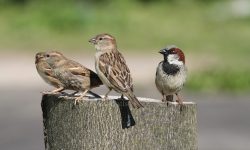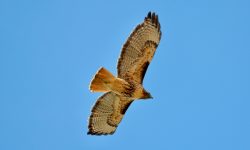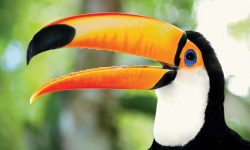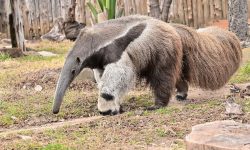Hidden among the leafy canopies of North America’s forests is a bird that few people ever see, but one that plays a crucial role in the ecosystem. The Yellow-billed Cuckoo (Coccyzus americanus) is a slender, long-tailed bird known for its elusive nature, rain-predicting calls, and most of all, its extraordinary taste for a food few birds dare to touch: fuzzy caterpillars.
While many birds avoid these hairy, irritating larvae, the Yellow-billed Cuckoo seeks them out in large numbers, helping control pest outbreaks that can devastate entire forests. This unique dietary specialization sets it apart from other songbirds and makes it an unsung hero of woodland ecosystems across North America.
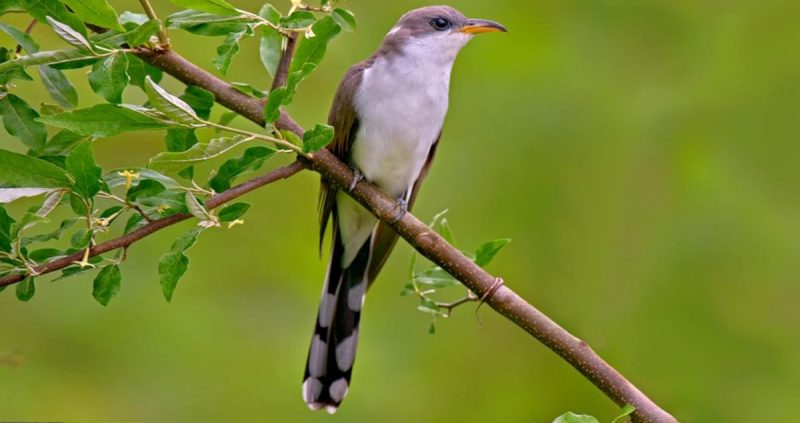
Meet the Yellow-Billed Cuckoo
A Subtle Beauty Hidden in the Leaves
At first glance, the Yellow-billed Cuckoo might not dazzle with neon colors or flashy displays — but don’t be fooled. This slender, medium-sized bird, stretching 11 to 12 inches (28–30 cm) in length, is the embodiment of quiet elegance. Its body is perfectly built for stealth: soft, warm brown feathers cloak its back, blending seamlessly with sun-dappled branches, while its clean white underparts gleam in quick flashes as it glides through the canopy.
But the true showpiece lies on its face — a sleek, downward-curving bill, strikingly colored yellow on the lower half and black above. This bright, banana-hued beak is not just for show; it’s the namesake of the species and a clue to its identity for sharp-eyed birders.
Trailing behind is a long, graceful tail, subtly patterned above but bold and dramatic below. Flip it over, and you’ll spot large, rounded white spots on the underside — like punctuation marks flashing in midair as the bird flies low through the trees. It’s a detail you may only glimpse for a moment, as this bird rarely makes a spectacle of itself.
The Yellow-billed Cuckoo is the phantom of the forest, moving slowly and methodically through dense foliage. It rarely sings unless prompted by heat or humidity, adding to its ghost-like reputation. Though not flashy, this bird is a master of mystery and movement, rewarding those with the patience to listen — and the luck to see.
Where Does It Live?
This bird is found throughout much of the eastern and central United States, extending into parts of southern Canada and northern Mexico during the breeding season. It favors deciduous woodlands, riparian forests, and dense thickets — habitats rich in insect prey and caterpillar populations.
During the winter months, it migrates thousands of miles to South America, especially the Amazon Basin, making it a long-distance traveler as well as a picky eater.
A Fuzzy Diet: Caterpillar Specialist Extraordinaire
Why Do Most Birds Avoid Fuzzy Caterpillars?
For many birds, fuzzy caterpillars are the culinary equivalent of a prickly pear — unappetizing, irritating, and best left untouched. These larvae, such as tent caterpillars, fall webworms, and forest webworms, are cloaked in bristly hairs or spines that can be toxic, barbed, or covered in skin-irritating substances.
When ingested, these defenses can scratch the digestive tract, inflame the mouth, or even sicken the bird. As a result, most avian insectivores will either completely avoid these caterpillars or nibble only cautiously, preferring softer, more manageable prey.
Yet, while fuzzy caterpillars multiply and strip trees bare during population booms, few predators rise to the challenge — except one.
Why Does the Yellow-Billed Cuckoo Feast on Them?
Enter the Yellow-billed Cuckoo, North America’s unlikely hero during caterpillar outbreaks. Rather than shying away from these hairy pests, this bird goes straight for them — with gusto. It’s one of the only species on the continent that actively seeks out fuzzy caterpillars in large numbers, turning what others avoid into its staple diet.
Thanks to a highly specialized digestive system, the cuckoo can swallow what would make most birds gag. It has been recorded eating dozens — even hundreds — of caterpillars in a single day, especially during the height of nesting season when the demand for protein is sky-high.
But it doesn’t dive in recklessly. Before eating, the cuckoo may grip the caterpillar and vigorously thrash it against a branch, loosening some of the bristles or squeezing out internal fluids. It might also scrape the caterpillar against bark to strip off hairs before swallowing.
Incredibly, the Yellow-billed Cuckoo has a rare internal adaptation as well: it can shed the lining of its stomach periodically, expelling accumulated bristles and toxins — almost like emptying a vacuum cleaner bag. This biological reset allows the bird to continue feasting on the very prey that others fear.
By doing so, the Yellow-billed Cuckoo fills an important ecological niche. When infestations of fuzzy caterpillars threaten to defoliate vast stretches of woodland in spring and summer, the cuckoo responds by moving into the area, gorging itself, feeding its chicks, and helping restore balance to the forest — one fuzzy caterpillar at a time.
The Rain Crow: Sound and Folklore
Why Is It Called the Rain Crow?
Wander through the humid woodlands of the southeastern United States on a sweltering summer afternoon, and you might hear it: a deep, throaty call echoing from the leafy canopy — “kow-kow-kow-kowp… kowp-kowp-kowp.” It’s not loud, but it cuts through the stillness like distant thunder. Moments later, the wind picks up. Dark clouds roll in. Rain is on the way.
This uncanny timing is why the Yellow-billed Cuckoo is lovingly known as the “Rain Crow.” Long before radar and forecasts, farmers and foragers listened for this mysterious voice as a sign that weather was about to change. And often, they were right.
The call itself is as unique as the bird: a low, hollow series of notes, sometimes accelerating into a harsh, stuttering rattle that seems to vibrate through the forest. While the bird is almost always hidden among thick leaves, its voice travels far across steamy landscapes, signaling its presence without ever revealing its form.
In rural folklore, the Rain Crow is a weather prophet, a forest whisperer whose voice brings renewal, thunder, or relief from drought. Whether it’s coincidence, instinct, or finely tuned sensitivity to atmospheric shifts, the Yellow-billed Cuckoo has earned a place not just in the ecosystem — but in the cultural memory of those who live close to the land.
Not a Brood Parasite Like Its Cousin
How Does the Yellow-Billed Cuckoo Raise Its Young?
In contrast to its notorious European cousin — the Common Cuckoo (Cuculus canorus), infamous for sneaking eggs into other birds’ nests — the Yellow-billed Cuckoo takes the parenting role seriously. It doesn’t outsource the job. Instead, it quietly builds its own nest, usually a loosely woven, flimsy platform of twigs, tucked into a fork of low tree branches where leafy cover provides shelter and secrecy.
Once the nest is complete, the female lays two to four pale blue eggs, and both parents take turns incubating and feeding the growing brood. But what’s truly astonishing is the speed at which their young develop. Within as little as 11 days, the eggs hatch, and the chicks — naked and helpless — spring into overdrive.
In just 7 to 9 days, they’re ready to leave the nest, making them some of the fastest-growing nestlings in North America. This rapid growth is not random; it’s likely an evolutionary response to the bird’s late seasonal arrival to breeding grounds and the short summer window before it must prepare for migration. In a race against time, the Yellow-billed Cuckoo raises a family in record-breaking speed.
Migration: A Journey to the Tropics
Where Does the Yellow-Billed Cuckoo Go in Winter?
By the time late summer settles in and insect populations begin to dwindle, the Yellow-billed Cuckoo disappears from the leafy corridors of North America. But this vanishing act isn’t magic — it’s migration. These elusive birds embark on a monumental journey, flying thousands of kilometers from the U.S. and southern Canada to the lush rainforests of South America, including Bolivia, Brazil, and Peru.
Their path takes them over formidable natural barriers — the Gulf of Mexico, Central American jungles, and Andean foothills — making their migration one of the most demanding among North American songbirds.
And yet, for all its scale, this incredible journey remains shrouded in mystery. The dense canopy of the Amazon Basin, where they spend the winter months, makes them nearly invisible to researchers. But occasional sightings and tracking data confirm they’re there — likely adapting their diet to tropical insects, waiting for spring to pull them north once more.
This long-distance voyage, accomplished in solitude and silence, is a testament to the instinctual brilliance of a bird that remains elusive even in flight — a soft-footed traveler tracing invisible lines across continents.
A Bird in Decline: Conservation Concerns
Though the Yellow-billed Cuckoo plays a vital role in maintaining forest health — especially by controlling outbreaks of destructive caterpillars — this soft-voiced guardian is fading from the landscape. Across much of its range, particularly in the western United States, its numbers have dropped alarmingly.
Several powerful forces are driving this decline. First is the widespread loss of riparian woodlands — the lush forests lining rivers and streams — where cuckoos prefer to nest and hunt. These habitats are rapidly vanishing under pressure from agriculture, grazing, and urban development, leaving fewer safe places for the bird to breed.
Next is the heavy use of pesticides, which reduces not only caterpillar populations but the entire spectrum of insect life cuckoos depend on for food. Without abundant prey during breeding season, cuckoos struggle to raise their young in time before migration.
Climate change adds a deeper layer of complexity. Rising temperatures and shifting seasons can throw off the delicate timing between cuckoo arrival and peak caterpillar abundance. A mistimed nesting season means empty nests and lost generations.
And for a bird that travels thousands of miles each year, migration itself poses grave risks — from glass-covered buildings to radio towers and disoriented night flights under artificial light.
The crisis is especially acute for the Western Yellow-billed Cuckoo, a distinct population so imperiled that it was listed as “Threatened” under the U.S. Endangered Species Act in 2014. Since then, conservationists have been racing against time — working to restore riparian corridors, promote insect-friendly practices, and secure nesting sites before they disappear entirely.
Protecting the Yellow-billed Cuckoo means more than saving a single species. It’s a step toward healing the fragile, interwoven systems that sustain life along North America’s rivers, forests, and skies.
Conclusion: Nature’s Caterpillar Control Specialist
The Yellow-billed Cuckoo may not be easy to spot, but its impact on the ecosystem is profound. As one of the only birds in North America that feeds heavily on fuzzy caterpillars, it plays a vital role in controlling pest outbreaks that would otherwise ravage trees and disrupt forest health.
With its secretive habits, haunting call, and voracious appetite for hairy larvae, the Yellow-billed Cuckoo is both a biological curiosity and an ecological guardian. Protecting this species means supporting the natural balance of North America’s forests — one fuzzy caterpillar at a time.


